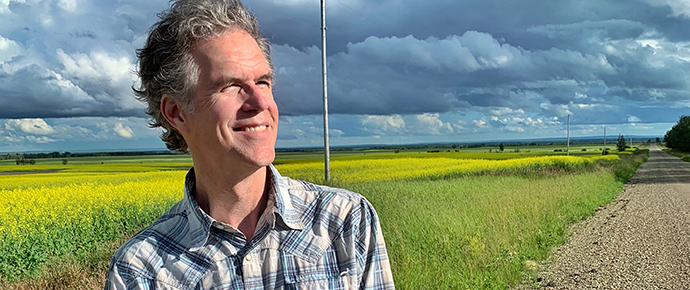
There will be an upcoming column reviewing the best new bluegrass-related products of the past year, but at the moment I’m still in the testing phase with several of them—right now I’m putting the “Blade Rubber,” a banjo player’s right shoulder massager, through the paces.
In the meantime, I thought it might be valuable to update you on some of the latest Facebook developments that might directly effect bluegrass artists and musicians who maintain fan “pages” on this too-big-to-fail platform.
Most bands or artists are pretty much expected to maintain a Facebook page for their music business activities. Telling fans or music associates that you don’t have one is now the equivalent to saying that you don’t own a cell phone, a computer, or shoes. Some are fortunate enough to have assistants who do this necessary social media work for them. They’re the ones who get to deal with direct messages that say things like, “Where can I get your music? I don’t have a computer.”(?), or “Is that you in this video????!!!” or just “Hi.” But for the rest of us, it’s a DIY Facebook world.
By the way, I single out Facebook here, because it’s still the social medium with the largest potential fanbase, especially for bluegrass music. Also, any advice given here wouldn’t necessarily apply to other social media. It might not apply anywhere, if I’m honest.
Facebook also seems to be the social medium that is the most ever-changing, with a host of fluctuating content priorities and an algorithm that’s constantly being tweaked. This perpetually-moving target characteristic is particularly ill-suited to its older demographic of users, but it’s also nearly impossible for anyone of any age to keep up with without some help.
Thanks to seeking advice from more qualified people, all of whom are 16 and haven’t seen the outdoors in three years, I’m going to try to assist you as best I can.
In order to have a Facebook page for your music activities, you first need to have a personal Facebook profile. A profile is different from a page in that you can do some activities on a profile that you can’t do on a page and vice versa. There seems to be no reason for any of those differences.
Where it starts getting more confusing is that Facebook now has two kinds of pages: the classic “Pages” and the “”New Pages Experience.” The “New Pages Experience” is a brand new way to operate your page that started about 12 years ago. Ever since it was introduced, they’ve been saying that all pages would be converted to this kind of page, which operates a little more like a personal profile or something. That hasn’t happened.
You are either presented with the option to switch to the “New Pages Experience” or not, or I think sometimes they just switch it anyway. Once you’ve made that change, you can still go back to the old page mode, if you prefer, through a simple 18-step process (on a computer only, and only in months containing 31 days), but they caution you: if you go back to the classic page, it’s very very difficult to switch to a new page again. You may also experience boils and other skin lesions if you do.
Once you’ve posted something to your page, new or old, you should get an alert about any interaction that occurs, like a comment, just as you would with a personal profile. Then you can go ahead and reply to that comment if you’d like to. This is when you might get my favorite notice from Facebook on your screen: “You are now interacting as yourself.” This means that any reply from you will be coming from the real you and not your carefully cultivated Somalian pirate/accordion player persona. That’s a relief. Proceeding as your true self, you can then interact with your fans.
What if your post receives no comments, likes, or any engagement at all? That most likely means that someone in Palo Alto thinks your post is either uninteresting, promoting something that competes in some way with Facebook (something owned by Google, for example, like YouTube), or they’re trying to lure you into paying cold hard cash to reach your followers. What is deemed uninteresting by the Facebook algorithm changes dramatically from month to month. At one time, your news feed may have been full of political rants from family members you used to speak to. Now those posts are mostly invisible (someone in Palo Alto needs a thank you card). At one time, videos got lots of attention and engagement, now they also seem invisible, but that also depends on the content.
Here’s a list of what currently seems to get the most or the least exposure on Facebook, loosely ranked from lowest to highest, at least according to my pale teenage advisers. Note that most of this information will be obsolete by next week:
Lowest
- Sharing your Uncle Harry’s COVID rant (with a directive to “copy and paste to your profile”)
- A YouTube video of your Uncle Harry’s COVID rant
- A YouTube video of almost anything
- A Facebook event (unless you pay to boost the post, or you invite the maximum number of friends. Tip: to invite friends you’ll need to interact as your pirate persona, not as yourself).
- Any post linking to any of the music streaming services (pay up for that, too, buddy!)
- Any post that says “click here for more information”
- The same photo you posted yesterday
- A picture of your band
- A picture of your lunch
- A picture of someone else’s lunch
- A video of marmots curling
- A video of a horse
- A video of a dog
- A video of a cat
- A video of two dogs and a cat
- A baby goat photo
- A family photo
- A family photo with two dogs, a cat, and a baby goat
- A picture of a snake
- A picture of former president Calvin Coolidge
- A picture of Dave Akeman A.K.A. Stringbean (for whatever reason, Facebook loves Calvin Coolidge and Stringbean)
- A video of someone juggling a chain saw, a Gibson F-5 mandolin, and a pear
Highest
I hope this helps. Enjoy interacting as yourself.




